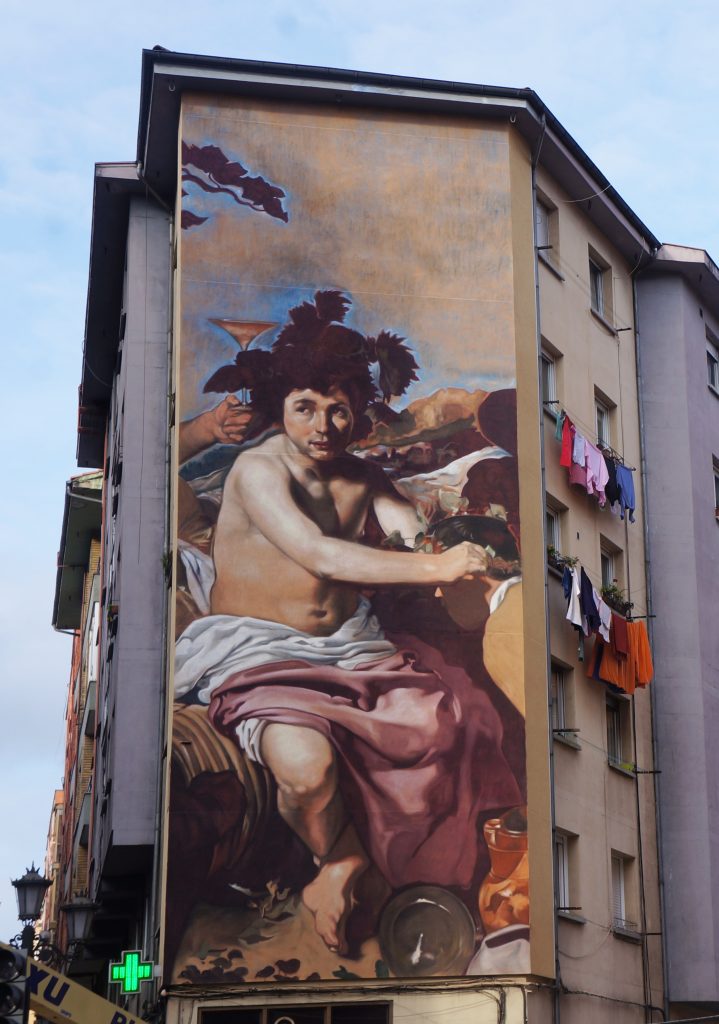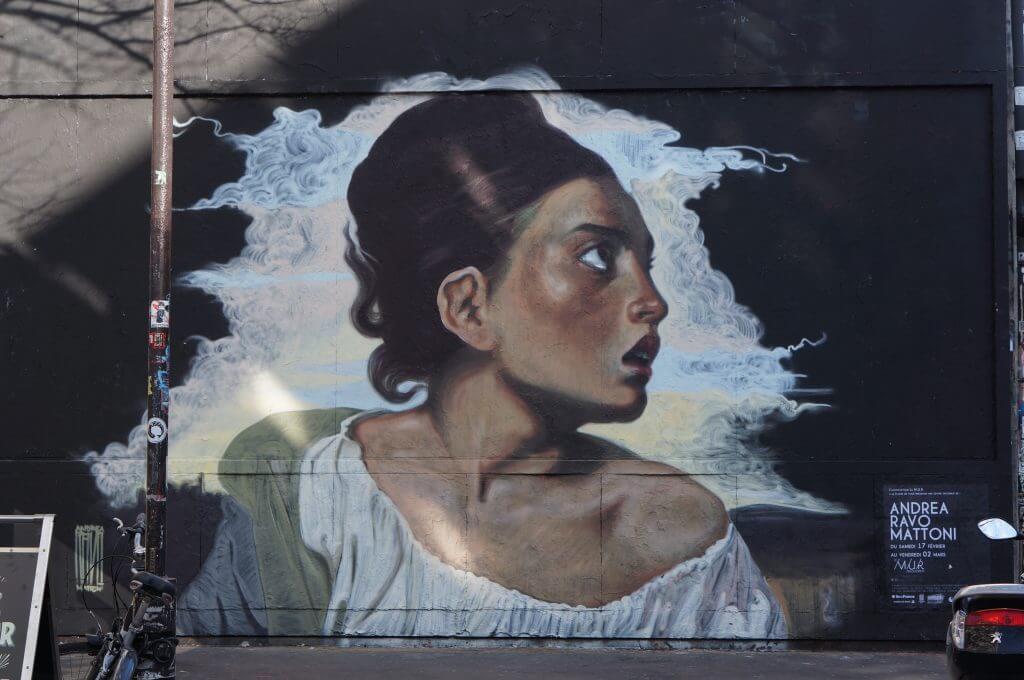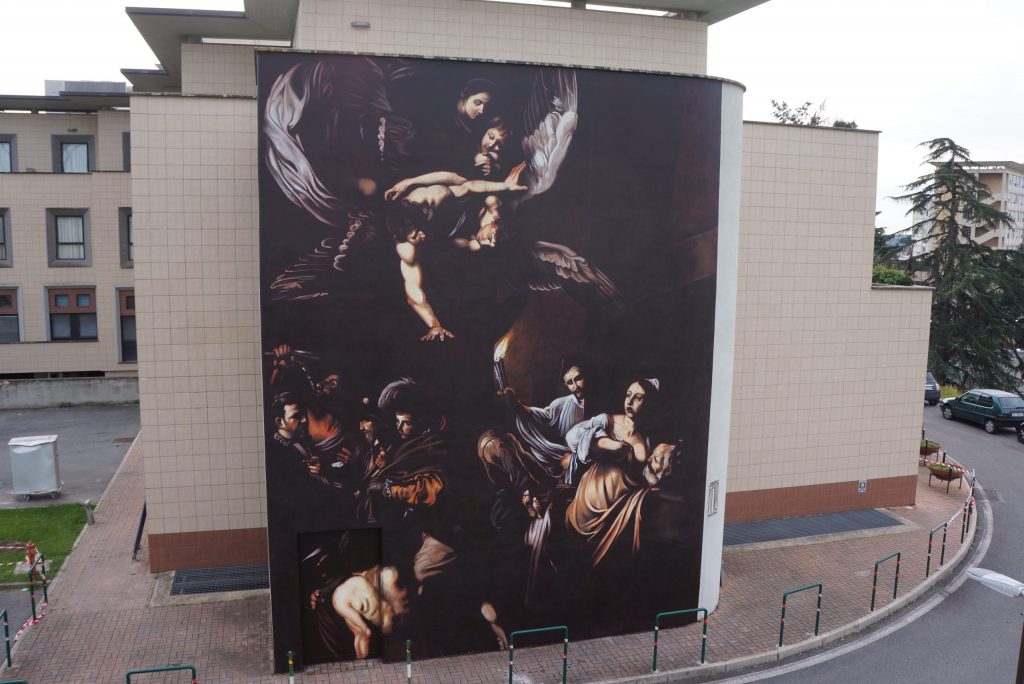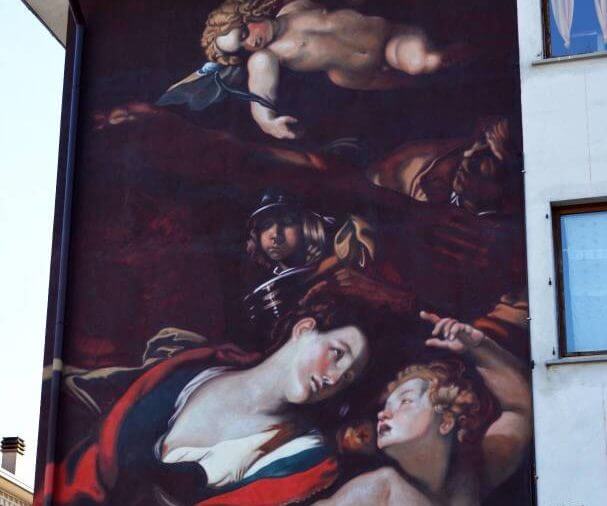Street Artist Ravo Recovers The Classics

Recovering Classicism in the contemporary is the focus of Andrea Ravo Mattoni’s practice. Mattoni (born in Varese, 1981) aka Ravo, is a Swiss-Italian street artist. We could say that he is a “street painter”, thanks to his artistic training. He ranges from one technique to another until he finds a meeting point in the eyes of his observers. In a period where it’s not always easy to find true talent, Ravo tries to unite generations and cultures with spray cans and plays of soft lights, shadows and colors referring to paintings of the past – to the great names of mostly Baroque art.
Ravo reminds us that at the base of contemporary art, there is always the art of the past and its teachings. It is no coincidence, as he tells us, that one of the his objectives is to collaborate more and more with institutions and experts in the fine arts sector. He wants to create a museum without borders. He is, therefore, a sort of spokesperson between cultures with paintings from Caravaggio’s Seven Works of Mercy, Velasquez’s The Triumph of Bacchus alongside Rubens and Van Eyck, to name a few.
FRONTRUNNER spoke to Ravo to find out more about his beginnings, his production methods, and how his collaboration with the Louvre began.
How was your passion for street art born?
In 1995, I started doing graffiti, tags, and lettering. So, my background is very linked to the world of hip-hop. I studied at the Brera Academy of Fine Arts and for a period, I stopped using cans to study classical art. Then oil and acrylic, and then I put these two worlds together.
Why did you choose to repurpose classic works, especially Caravaggio?
The project of the recovery of Classicism in the contemporary brings classical art works outside the museums and carries on the very ancient tradition of copying in a contemporary and modern form. The idea is to collaborate with schools and museums: in fact, during some lessons, I am sometimes joined by art historians.

Il Trionfo di Bacco (The Triumph of Bacchus) by Diego Velázquez (2018)
Oviedo, Asturias, Spain
Image courtesy of the artist
On average, what are the production cycles for your “painting”?
On average, production times are six days of work, even for very large walls of 25-30 meters. I work with a mechanical arm, carry over the proportions, use a brown background, and then put on a final protective.
What inspires you to create this work?
The inspiration – or rather the research – the study of a work, starts from the museums. But also from the painters who were born into that territory. Every time I move from country to country, I try to have a strong correlation with the museums and the landscape. Caravaggio, for example, was in Lombardy and Sicily, then in Sardinia with the Master of Ozieri. In France, Delacroix, Valentine de Boulogne, George de la Tour; I change according to the territory and look for suggestions from art historians, or from the museums, themselves. For me, it is a way to deepen and study the history of art.
Are you tied to any particular job?
I’m very attached to the first work I made in Spain in Oviedo: a detail of the Triumph of Bacchus by Velázquez from the Prado Museum in Madrid. It is one of the greatest works I have ever made and Velázquez is among the artists that I prefer.

Tell us about your collaboration with the Louvre.
The collaboration with the Louvre Museum began a few years ago. Cyrille Gouyette, the director of the Education Department at the Louvre, came to visit me in Italy. From there, he took me to France and a collaboration with him was born, because he is also a curator and deals with urban art. I did a performance in the Jardin des Tuileries, in front of the Pyramid, in collaboration with Fine Arts Paris. The Louvre was not the first institution I collaborated with. In fact, before there was the Municipality of Varallo Sesia, Bassano de Grappa, and the Fabre Museum in Montpellier, with which I now have a great project. But the Louvre is the Louvre!
How do you consider the urban art scene in Italy and abroad today?
The urban art scene is very varied and there is also a lot of confusion, in my opinion. It will be the task of art historians and critics to be able to decode this period. I come from graffiti, but I do contemporary art; then I’m labeled as a street artist or urban artist, but I also work on canvas. Even if I do public art, I don’t work illegally. In my view, real street art is still linked to illegality. We are a very large family, but each has its own poetics and style. Let’s say it is a label within which you can find many sub-categories. Apart from this period of a forced break for everyone (due to COVID-19), it’s a good time for urban art.

Jeune orpheline au cimetière (Orphan Girl at the Cemetery) by Eugène Delacroix (2018)
Le MUR Oberkampf, Paris
Photo credit: @alexandrine_ar
Don’t you think there is too much street art of too little quality?
This is a delicate matter. It would not be my job to judge the work of others, but the main problem is to consider anything that is on the street, a form of street art, or art. Sometimes a lot of art in a gallery is, perhaps, not considered art in all respects. There is an overabundance of street art, but this is also linked to social networks and to the many blogs dedicated to street art.
Today, we photograph (in a compulsive and obsessive way) anything on the street. Whether it is a little heart or a mural, they are put on the same level, and this causes a bit of confusion on the part of the viewer. Certainly not on the part of those inside of this world as an artist like me. This is a discourse that gallerists, curators, critics and historians have to face seriously.

Sette opere di Misericordia (The Seven Works of Mercy) by Caravaggio (2017)
Policlinico Universitario Agostino Gemelli, Rome
Photo credit: @andreaveroniph
Are social networks important to your profession? What’s your approach?
Social networks are essential. In 1995, when there was no Internet and I didn’t have a mobile phone, I took pictures with an analog camera. Obviously, my path has also changed through the Internet; not only social networks, but also the accessibility of images so quickly. For me, it is essential. If I had to do this work in 1995, the research would also have been different. I would have had to go to libraries more often, in search of books. Instead, it is much simpler: just insert some keywords if I need to know something specific about a painting. Yes, this has changed my work a lot.
Then came the social networks that was further a great help because with a click, my work immediately shows all over the world. Above all, instant messaging on Facebook and Instagram. In fact, Instagram is an inexhaustible source of contacts and work, so I look very positively at social networks and the Internet.
What are your future projects and what you would like to achieve in particular?
I have many projects and this year was very full (also the next one), but due to COVID-19, I’m recovering. I spent three quiet months at home with my family, but the situation led to rescheduling all the projects around the world. I am always excited to make new murals. At the end of October, I am preparing for a solo show at the Nicolas Xavier Gallery in Montpellier. Then, as already mentioned, a project with the Fabre Museum.

Leggiuno Martirio di Santa Rufina e Seconda Morazzone (The Martyrdom of Saints Rufina and Secunda) by Giulio Cesare Procaccini and Giovanni Batista Crespi
Photo credit: Martina Di Foggia